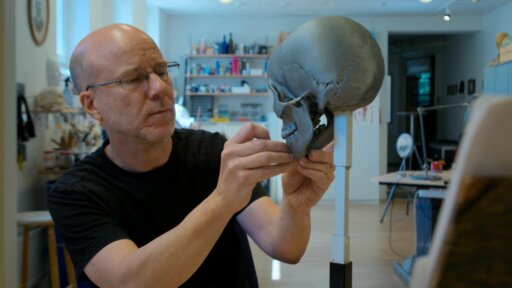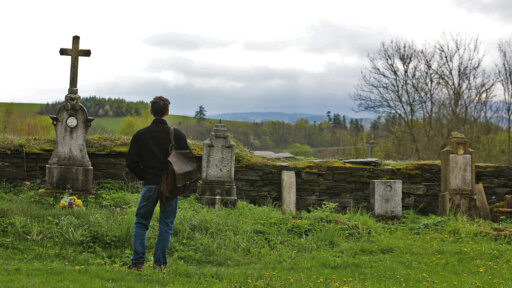Residents of the rural Polish town of Pień have long avoided a particular hill in the village – and in 2022, a team of archaeologists led by Dariusz Poliński and Magdalena Zagrodzka learned why. They discovered the body of a woman buried with a sickle across her neck, and a triangular padlock attached to her toe. Had they dug up a gruesome crime scene – or evidence of the supernatural?
Features
For generations, the villagers of Pie have avoided this hill.
It's never been built on, and children are taught to avoid it.
In 2022, a team of archaeologists led by Dariusz Poliski and Magdalena Zagrodzka heard strange stories about skulls washing down a hillside.
And they made a shocking discovery: a burial unlike any they had ever seen before.
The first thing that we found was something with the sound of iron or metal.
After delicately brushing it, it turned out to be convex.
And after a while, we knew it was a sickle.
The sickle was deliberately placed across the neck of the deceased, seemingly to restrain the dead woman.
But that's not all they found, as translator Marcin reveals.
They found another metal object, which was surprising because they already found the sickle.
A chunk of rusted metal was found attached to the woman's toe.
Investigations revealed that it was a padlock -- but not just any padlock.
This triangular shape is incredibly rare.
Before this excavation, only one had been found in the whole of Poland.
Unusually, the padlock was found open.
Together, the padlock and sickle make this burial unique in Poland, if not the world.
This extraordinary discovery has also caught the attention of historian Dan Jones.
He has long been fascinated by Eastern-Central European ritualism.
I have to admit, when I first saw the pictures, I was incredibly excited.
I've never seen anything like this before.
Is this a crime scene?
Is this evidence of the supernatural?
Is this evidence of a unique craze, or are we in fact stepping back into an entirely different world in which Europe was governed by totally different rules?
Carbon dating reveals this woma was buried in the 17th century, at a time when the people of Poland were fighting for their very survival.
[Jones] There was the Thirty Years' War, which occupies a lot of Central Europe, hundreds of thousands of deaths, and all set against a period of climate change in which temperatures dropped, harvests failed, disease rose.
For ordinary people, they were really living on the edge.


